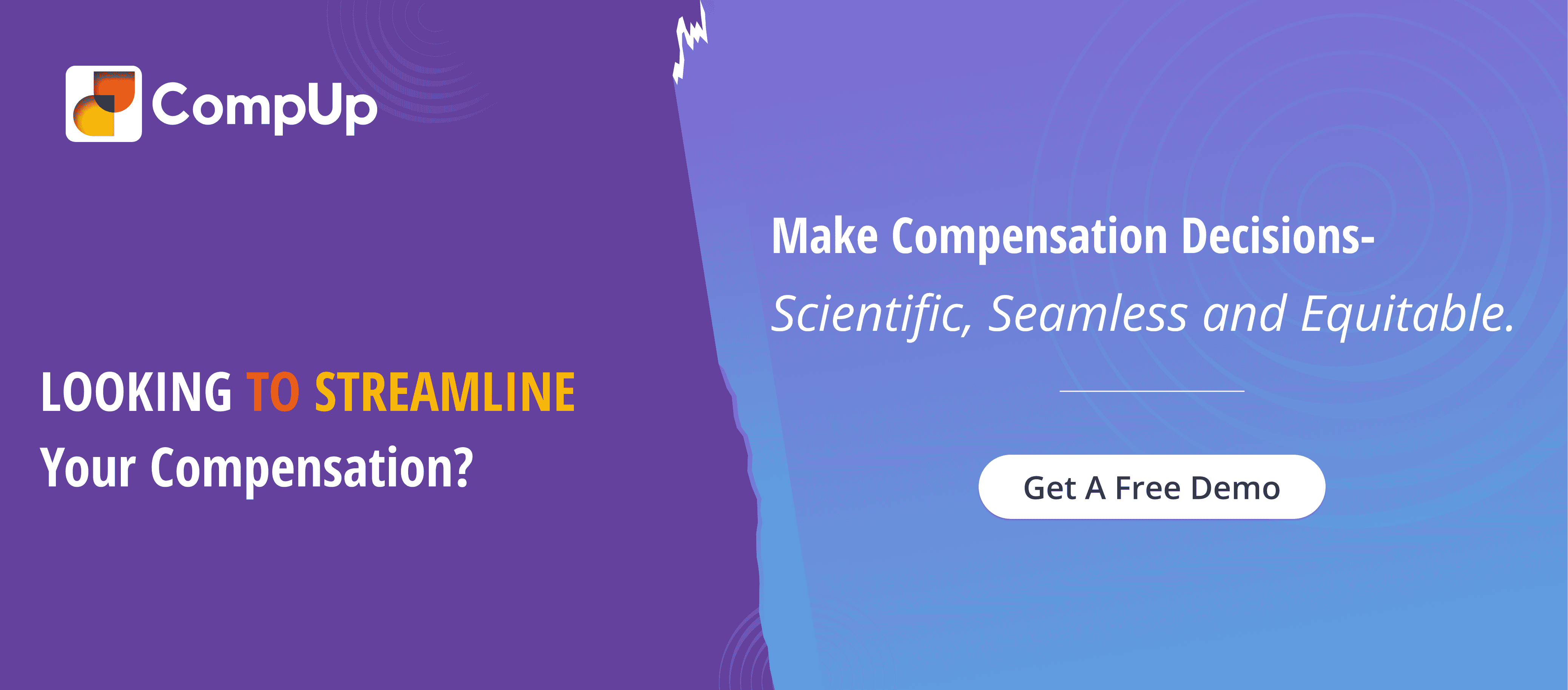
Offering competitive pay alone is no longer enough to win the war for talent. Employees today expect more—benefits that align with their personal and professional goals, recognition that feels meaningful, and growth opportunities that inspire loyalty. Yet, balancing these expectations with organizational budgets and goals often feels like navigating a maze.
This is where Total Rewards can transform your approach. While you may already understand the basics, the real challenge lies in leveraging Total Rewards as a strategic advantage—not just a list of perks.
How do you design a program that resonates with diverse employee needs, aligns with company objectives, and remains agile in the face of economic shifts?
This guide explores the Total Rewards framework, providing insights and actionable strategies to elevate your program, maximize its impact, and ensure your organization becomes a magnet for top talent.
Total Rewards is a strategic framework designed to encompass everything an organization provides to attract, retain, and engage employees. It combines monetary and non-monetary elements to create a value-driven proposition that supports employee satisfaction and organizational success.
At its core, Total Rewards includes financial compensation, such as base pay and bonuses, and extends to non-financial elements. These might include benefits like health insurance, flexible work arrangements, career development opportunities, and recognition programs. Together, these elements cater to the diverse needs of a modern workforce.
What sets Total Rewards apart is its focus on aligning employee needs with organizational goals.
It shifts the conversation from “What are we paying our employees?” to “What value do we provide to our workforce?” This approach emphasizes a holistic understanding of employee well-being, motivation, and engagement.
In a Total Rewards system, every component works together to deliver a cohesive employee experience. For instance, fair compensation might attract talent, but opportunities for growth and a supportive culture keep employees engaged. Recognition programs further reinforce positive behaviors, while comprehensive benefits ensure employees feel cared for, both personally and professionally.
Learn More: Uncover actionable insights on leveraging Total Rewards for organizational success in this detailed guide.

A well-rounded Total Rewards framework integrates multiple elements to address the diverse needs of employees. By combining monetary and non-monetary benefits, organizations can create a compelling value proposition.
Here’s a breakdown of the building blocks of a Total Rewards strategy:
This is the financial aspect of Total Rewards, directly tied to an employee’s work and performance. Key elements include:
Benefits focus on enhancing an employee’s well-being and security, covering both short-term needs and long-term goals. Examples include:
Balancing professional and personal priorities is essential for productivity and morale. Work-life balance initiatives include:
Recognition reinforces positive behaviors and cultivates a culture of appreciation. Examples include:
Growth opportunities are a critical motivator for employees. Career development initiatives might include:
While not always listed, the work environment plays a critical role in Total Rewards. This includes:
Understanding the individual components of Total Rewards is just the beginning. The real power lies in how these elements work together to create a holistic framework that addresses both employee and organizational needs.
But why does this integration matter so much? Let’s explore the critical reasons why Total Rewards are essential for modern HR strategies and how they drive employee engagement, satisfaction, and business success.
Total Rewards is more than a collection of perks - it is a strategic framework designed to drive employee engagement, foster loyalty, and enhance performance. By addressing the diverse needs of today’s workforce, Total Rewards not only motivates employees but also aligns their contributions with organizational goals. In short, it creates a cohesive system that fuels business success.
Here’s why Total Rewards matter:
In a competitive job market, candidates seek more than just a paycheck. A well-rounded Total Rewards package, offering both financial and non-financial benefits, sets your organization apart. It communicates your commitment to employee well-being and growth, making your company an employer of choice.
Employees are more likely to stay with organizations that address their holistic needs. Total Rewards fosters loyalty by offering a balanced combination of fair pay, career development opportunities, and work-life balance initiatives. This reduces turnover rates and saves costs associated with hiring and training.
An engaged employee is a productive employee. Total Rewards cultivates a sense of purpose and belonging by recognizing achievements, supporting career growth, and providing meaningful benefits. This motivates employees to perform at their best.
Total Rewards frameworks enable organizations to implement equitable pay structures and consistent benefits, reducing disparities. Transparency in rewards fosters trust, creating a positive workplace culture where employees feel valued and respected.
By strategically designing Total Rewards, HR teams can align employee goals with business priorities. Performance-based incentives, for instance, can drive behaviors that directly contribute to organizational success, ensuring a unified effort to achieve key targets.
Modern workplaces are diverse, with employees spanning multiple generations and life stages. Total Rewards offers flexibility, allowing organizations to cater to varying preferences—whether it’s offering wellness programs for younger employees or retirement planning for seasoned professionals.
The workforce is evolving, with employees prioritizing mental health, work-life balance, and meaningful recognition. Total Rewards enables organizations to remain agile, updating offerings to meet these shifting expectations and remain relevant in a competitive landscape.
A clear and accessible Rewards Statement is critical to this framework. It provides employees with a transparent view of their total compensation, which encompasses both financial and non-financial rewards. CompUp's expert solutions can help you create and deliver effective rewards statements that elevate your Total Rewards strategy.
Recognizing the importance of Total Rewards is the first step, but turning this understanding into actionable outcomes requires a well-crafted strategy. Let’s explore the key steps to building an effective Total Rewards strategy that drives engagement.
A successful Total Rewards strategy bridges the gap between employee expectations and organizational objectives, creating a framework that delivers meaningful value to both. It is both an art and a science. Creating a solid strategy requires aligning organizational goals with employees' diverse needs while maintaining cost-effectiveness and competitive positioning.
Here are the critical steps and considerations to build a strategy that works:
Pro Tip: A well-executed Total Rewards strategy is not static—it evolves with your workforce and organizational needs. By taking a data-driven, employee-focused approach, you can create a system that drives sustained engagement and business growth.
Recognizing the key considerations for a successful Total Rewards strategy lays a strong foundation. However, turning these considerations into actionable outcomes requires following proven best practices. Let’s explore the practical steps to ensure your Total Rewards program is both effective and impactful.


Effective implementation of a Total Rewards strategy requires precision, data-driven insights, and adaptability. It’s about using metrics to inform decisions and refining processes to meet evolving employee and organizational needs. By focusing on measurable outcomes and scalable processes, you can ensure your program delivers sustained impact.
Here are a few best practices to ensure your program achieves maximum impact:
These simple steps will help you implement a Total Rewards program that resonates with employees and supports business growth.
However, designing a Total Rewards strategy is just the beginning. Organizations need the right tools and technology to implement it effectively and ensure seamless management. Leveraging advanced platforms and analytics is key to streamlining rewards processes, improving transparency, and maximizing impact.
Technology has become a cornerstone of Total Rewards, enabling organizations to create, manage, and communicate comprehensive rewards programs effectively. CompUp stands out as a leading platform in this space, offering tools that simplify and elevate Total Rewards strategies.
CompUp goes beyond standard technology solutions. This unified platform is designed to meet the dynamic needs of modern organizations. Whether you are aiming to streamline operations, improve transparency, or drive employee satisfaction, CompUp ensures your Total Rewards strategy is efficient, equitable, and impactful.
These are a few ways in which technology can support your Total Rewards strategy:
Technology automates critical processes such as salary structuring, budget allocation, and performance-based pay, making it easier for organizations to design competitive compensation packages.
How CompUp Excels:
CompUp offers advanced compensation planning tools, including salary bands and real-time budget simulation. These tools ensure that businesses can allocate rewards efficiently and align them with performance goals.
A key benefit of technology in compensation management is ensuring that employees clearly understand their total rewards. Digital platforms help present reward statements in an accessible format, enhancing trust and engagement.
How CompUp Excels:
With CompUp, organizations can deliver personalized rewards statements that clearly and easily explain the full value of employee compensation and benefits.
Technology provides robust analytics that allow HR teams to measure the effectiveness of their rewards programs, track pay trends, and optimize compensation structures based on real-time data.
How CompUp Excels:
CompUp goes beyond basic analytics by offering actionable insights through visual dashboards. It helps HR professionals monitor engagement, retention, and pay equity to make informed decisions.
Modern compensation technology enables flexible benefits and self-service options, allowing employees to tailor rewards to their individual needs and preferences.
How CompUp Excels:
CompUp provides an intuitive and user-friendly platform on which employees can access and choose rewards that best suit their lifestyle and professional growth needs, promoting higher satisfaction.
Employees expect to access their reward information anytime and from any location, making cloud-based solutions essential for seamless communication and transparency.
How CompUp Excels:
CompUp’s cloud-based platform ensures employees have 24/7 access to their rewards data, allowing them to stay informed and engaged with their compensation details effortlessly.
Technology supports virtual recognition programs and gamified reward systems, helping organizations boost morale and engagement, particularly in remote or hybrid work environments.
How CompUp Excels:
CompUp integrates with recognition tools to facilitate real-time appreciation and engagement, enhancing employee motivation and reinforcing a positive workplace culture.
Staying compliant with regulatory standards and promoting pay equity are crucial aspects of compensation management. Technology helps organizations track pay data and ensure adherence to legal requirements.
How CompUp Excels:
CompUp conducts comprehensive pay equity analysis and ensures compliance with industry-specific and regional regulations, helping businesses maintain fairness and transparency in their compensation practices.
Incorporating CompUp into your Total Rewards strategy isn’t just about adopting a tool—it’s about redefining how you engage with your workforce. By prioritizing transparency, equity, and personalization, CompUp empowers organizations to align employee satisfaction with business success.
Technology is no longer a luxury but a necessity for creating efficient, data-driven, and adaptable rewards programs. CompUp bridges the gap between complexity and simplicity, ensuring your organization stays ahead in an ever-evolving talent landscape.
The concept of Total Rewards is reshaping how organizations manage their workforce. By taking a comprehensive and strategic approach, HR professionals can build a compelling value proposition for employees, driving satisfaction and business success alike.
However, designing and implementing a Total Rewards strategy requires more than intent. It demands actionable insights, agile tools, and transparent communication to align employee satisfaction with organizational success. This is where technology becomes indispensable, bridging the gap between strategy and execution.
CompUp has changed the way organizations manage rewards programs, ensuring they are not only effective but also equitable and personalized. By adopting these solutions, HR professionals can address the challenges of modern workforce expectations with confidence. You can build programs that drive lasting engagement and loyalty.
In a world where data and agility are key, CompUp ensures that your Total Rewards strategy remains aligned with workforce expectations and business objectives. Schedule a consultation today to discover how CompUp can help you design equitable, data-driven, and personalized programs.
How can organizations measure the ROI of a Total Rewards program?
Measuring the return on investment involves tracking metrics such as employee engagement, retention rates, productivity levels, and turnover costs. Analytics tools can help link these outcomes to specific reward initiatives.
What are some common challenges in implementing Total Rewards strategies, and how can they be overcome?
Challenges include budget constraints, aligning rewards with diverse employee preferences, and maintaining program agility. Overcoming these requires careful workforce segmentation, leveraging data analytics, and streamlining operations with platforms like CompUp.
How can Total Rewards programs be personalized for a multi-generational workforce?
Programs should include a mix of traditional and modern rewards, such as retirement plans for seasoned employees and wellness programs or professional development opportunities for younger generations. Flexible options are key.
What role do equity and inclusion play in Total Rewards?
Equity ensures fair pay and benefits for all employees, while inclusion fosters a sense of belonging. Both are integral to creating a Total Rewards program that is appealing and effective for a diverse workforce.
How can companies effectively communicate their Total Rewards offerings to employees?
Clear communication is essential. Features like personalized rewards statements, employee portals, and regular updates can help employees understand and appreciate the full value of their Total Rewards.

Co-founder & CEO, CompUp
Anurag Dixit, founder of CompUp, is a seasoned expert in all things compensation and total rewards. With a deep understanding of the current compensation trends, his vision is to help companies create fair, transparent, and effective compensation strategies.
Revolutionizing Pay Strategies: Don't Miss Our Latest Blogs on Compensation Benchmarking